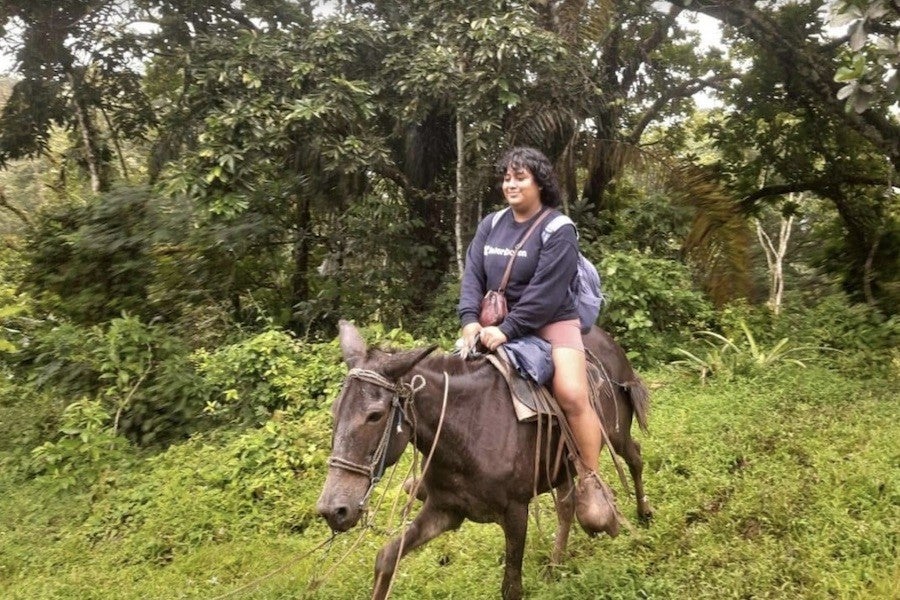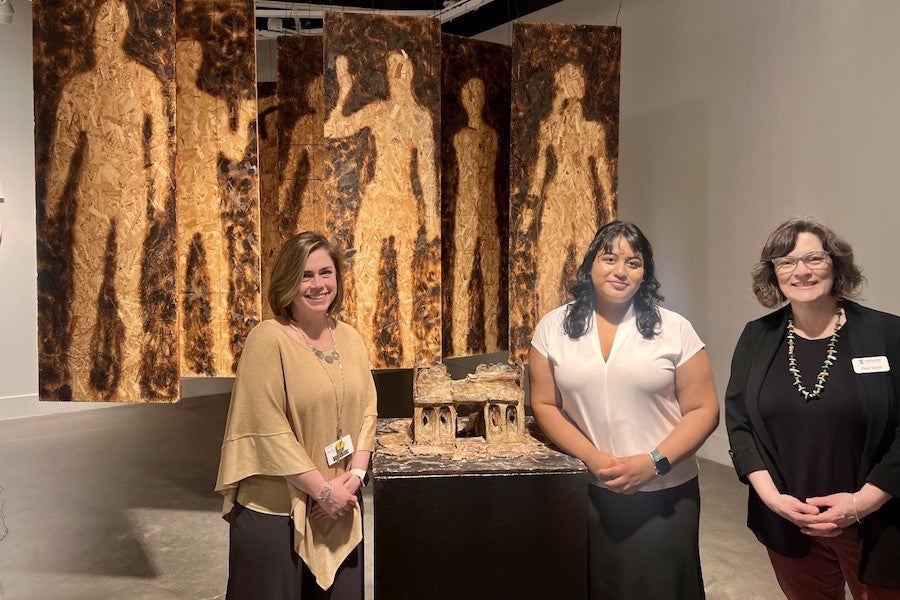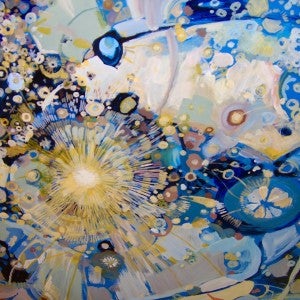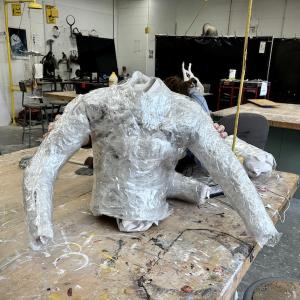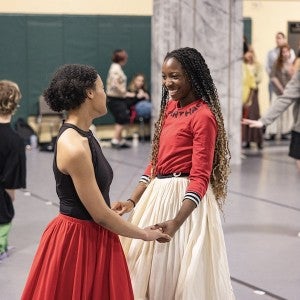Nicaraguan student overcomes adversity to make her arts education dreams come true
Solangel Álvarez worked hard to attend Interlochen Arts Academy. Now, she’s reimagining her artistic style and sharing her culture with other students.
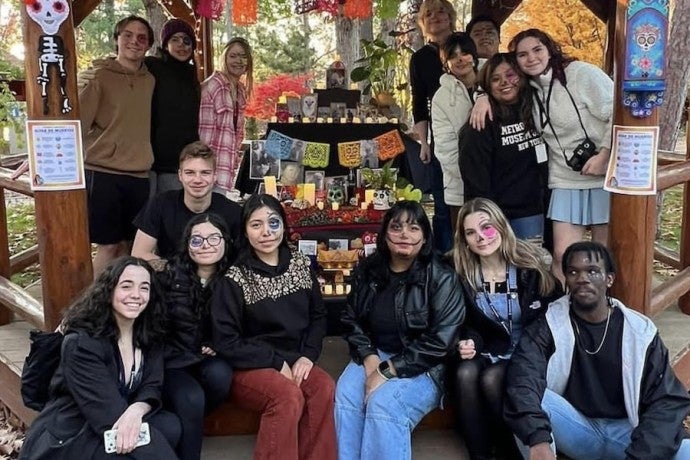
Álvarez (bottom row, third from right) poses with members of the Latin Student Union at their Day of the Dead celebration. Three hundred Interlochen students attended the festivities.
When Solangel Álvarez first heard about Interlochen, she found herself drawn to the place for reasons she couldn’t explain. It wasn’t until she came to campus for Camp that Interlochen’s pull on her life started to make more sense.
“Interlochen had the most intriguing name to me,” says Álvarez. “I ended up choosing to go there for Camp, where I absolutely fell in love with the natural environment and the visual arts studios they had to offer. I knew I wanted to come back for Arts Academy as well.”
The financial hurdles standing between Álvarez and her Interlochen dream seemed insurmountable at first, but she knew she had to forge a way forward. Fueled by her passion for the visual arts and a deep love for her family, Álvarez embarked on an against-all-odds journey that would test the limits of her perseverance and ingenuity—and forever change her perspective on art.
Leading the way for her family
For Álvarez, the idea of attending Arts Academy represented a new direction for her immigrant family. Álvarez came to the United States as an eight-year-old. During her childhood years, her mother taught her Spanish and took the family on frequent visits to their home country, so that Álvarez and her siblings would not forget their culture. At the same time, Álvarez was encouraged to seek out success for herself in her new environment, and she took that advice seriously.
To fund her Arts Academy education, Álvarez worked as a server in Miami for eight months. She split costs evenly with her mother, and Interlochen covered all the rest with need- and merit-based scholarships. The results of her hard work have been deeply rewarding. When she walks across the Kresge stage in May of this year, Álvarez will become the first of her family to graduate high school.
“I would do it over again in a heartbeat,” she says.
During her time at school, her close bonds with her family have become even more important. Álvarez cares deeply about accessibility in the arts, and wants people like her mother to be able to understand and benefit from the visual art she creates.
“My mom is my inspiration,” she says. “She’s a first-generation immigrant in the United States, and doesn’t have a super deep understanding of art as a profession. But for her to be able to touch my artwork and interact with it—she can understand it in a whole new way.”
Álvarez’s passion for accessibility was fueled by time spent working with guest artist Elaine Gurian, whose work focuses on creating art for public spaces and public consumption.
“Elaine talked a lot about accessibility and interactivity within the arts, and that just catapulted into everything else that I did,” says Álvarez. “Many of my sculptures turned into games or interactive experiences for people to touch and understand.”
Sharing her culture
In addition to igniting her interest in accessibility, Interlochen also provided Álvarez with plenty of opportunities to share her culture with others. Within her first few months at Interlochen, Álvarez became involved with Interlochen’s Latin Student Union and soon stepped into the role of vice president. She has enjoyed contributing to events like LSU Asada, where she and her friends made favorite dishes from home and shared them with the student body. Álvarez also had the chance to open an Arts Academy Community Meeting with a speech.
“It’s something I’m really passionate about,” she says. “I spoke about how celebrating our culture isn’t something we just do during certain months—we celebrate it all the time.”
Álvarez also uses her artwork as a form of activism and cultural expression, openly examining Nicaraguan politics in her creations.
Celebrating our culture isn’t something we just do during certain months—we celebrate it all the time.
Art for the public good
For Álvarez, the sky’s the limit. In the future, she wants to continue finding ways for artwork to positively impact local communities. This fall, she will enroll at the School of the Art Institute of Chicago as a student in the SAIC Scholars Program, with an emphasis on sculpture. She hopes to reach underprivileged communities with the power of creative pursuits.
“I would enjoy going to places like Miami and doing public installations in spaces where people aren’t exposed to art as frequently,” she says. “I’d also love to help set up communities that promote art as part of a positive lifestyle, as opposed to being in danger or on the streets.”
Her advice to international students considering Arts Academy? Take the plunge. Although Álvarez had plenty of nerves going into Arts Academy, it’s a decision that’s paid off for her in many ways.
“I would say take the jump, because a year later, you’ll have completely forgotten about the fear you had in the beginning. You’ll only remember the joy that you had throughout your year.”
Learn more about resources for international students at Interlochen Arts Academy.
